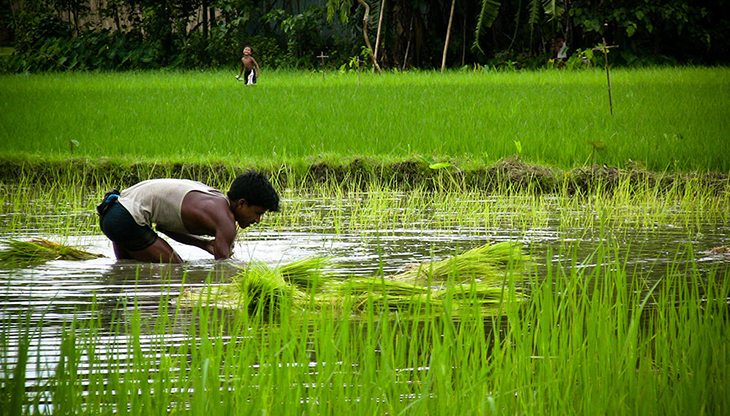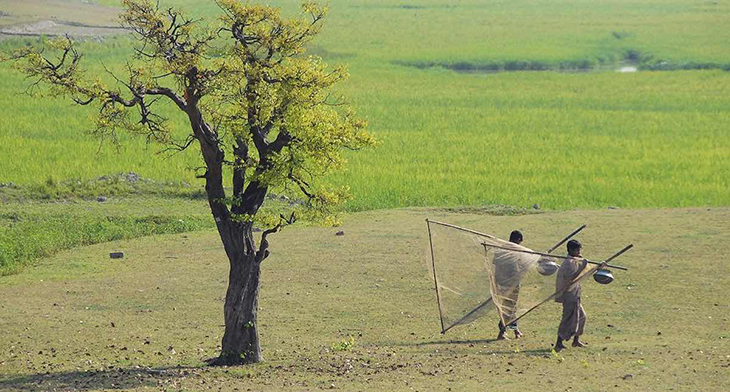
Bangladesh is a small South East Asian country that’s slightly smaller than the state of Iowa, which is saying something considering their population sits approximately at 165 million people. That’s a lot, in case you can’t exactly picture it in your head.
With such a large number of residents, feeding that many people has also become a challenge over the years. What makes this even harder is that Bangladesh is considered a developing nation, with around 90% of the population living below the poverty line.
But over the last 4 decades, the Bangladeshi small-holder farmers have been using very simple methods, turning the rather dry Bengal basin into some of the best and richest croplands on the planet, reaping at least two to three rice harvests throughout the year.
In order to achieve this, these farmers developed a climate-resilient water system they are calling “The Bengal Water Machine,” which manages to keep the underground reservoir full of water. This means that despite the mechanized irrigation, through accumulating the seasonal monsoon rains, they’ve been able to store a volume of 75 to 90 cubic kilometers, roughly 18 to 21.5 cubic miles, of water.
When compared to other bodies of water, it makes it around 5 to 6 times the volume of England’s Lake Windermere, the size of half of Lake Como in Italy, three times the amount of the Hoover dam reservoir of Lake Mead, one-sixth the volume of Lake Erie, or twice the double of China’s Three Gorges Dam. Or when computed in gallons, that’s 23,775, 484,712, 233.00 or in simpler terms, roughly 23.7 trillion gallons.

Although it’s still awaiting peer-review, it was discovered in a recent study that ‘took one million water measurements from 465 separate wells between 1998 and 2018.’
A data analyst and researcher from the Institute for Risk and Disaster Reduction at the University College London, Mohammad Shamsudduha, compiled some information. He found that people don’t necessarily require expensive and state-of-the-art technology to make sure their cropland continues to get irrigated should climate change, which may also go hand-in-hand with extensive droughts, be even more of an issue in the future.
This is since The Bengal Water Machine happens to be made of just regular old wells that are dug no more than 300 feet below. This increases the capture of the monsoon rains, which come between the months of May to October, rather than allowing them to drain into the Bay of Bengal instead.
The dry season in Bangladesh runs from November to April, and during that time, 16 million small-landholder farmers pump water up from the reservoir beneath the Bengal Basin to irrigate their rice. As a result, they’ve managed to produce such high numbers that they’ve become the ‘world’s fourth-largest producers of the stuff,’ which has allowed the country to become completely grain independent.
Shamsudduha told SciDev.Net, “In order to benefit from the operation of the Bengal Water Machine, we recommend identifying the potential areas where further freshwater capture is possible under current and projected changes in monsoon rainfall and irrigation demand. Continuous monitoring of groundwater levels and abstraction can ensure the sustainability of the Bengal Water Machine.”
As for other research groups, they also looked at the study results and found that these types of “nature-based solutions” may benefit other areas such as the Mekong Delta, or also the Huang He river in China, which have shown their vulnerability. And should this process prove effective in these other areas, it may be a solution for other countries with the same problems to adapt as well.
What are your thoughts? Please comment below and share this news!
True Activist / Report a typo


